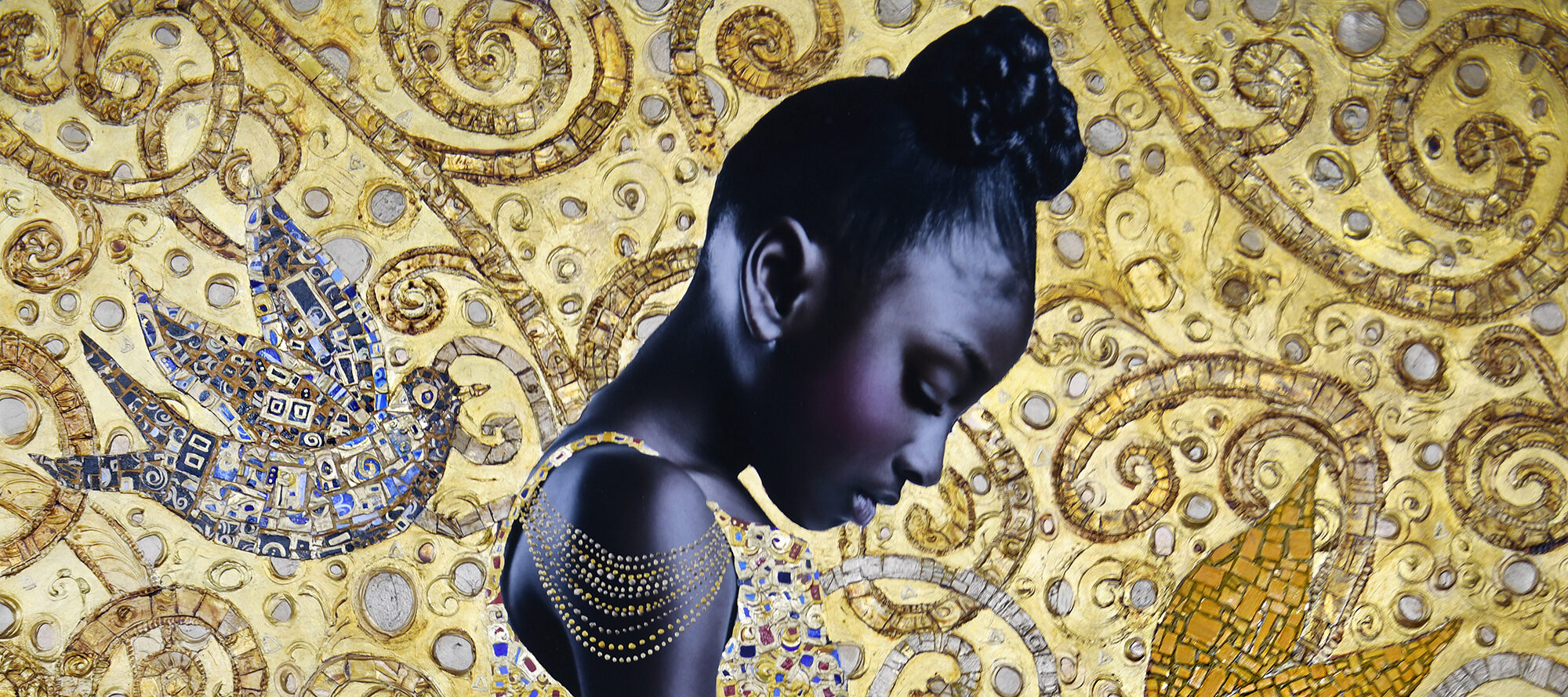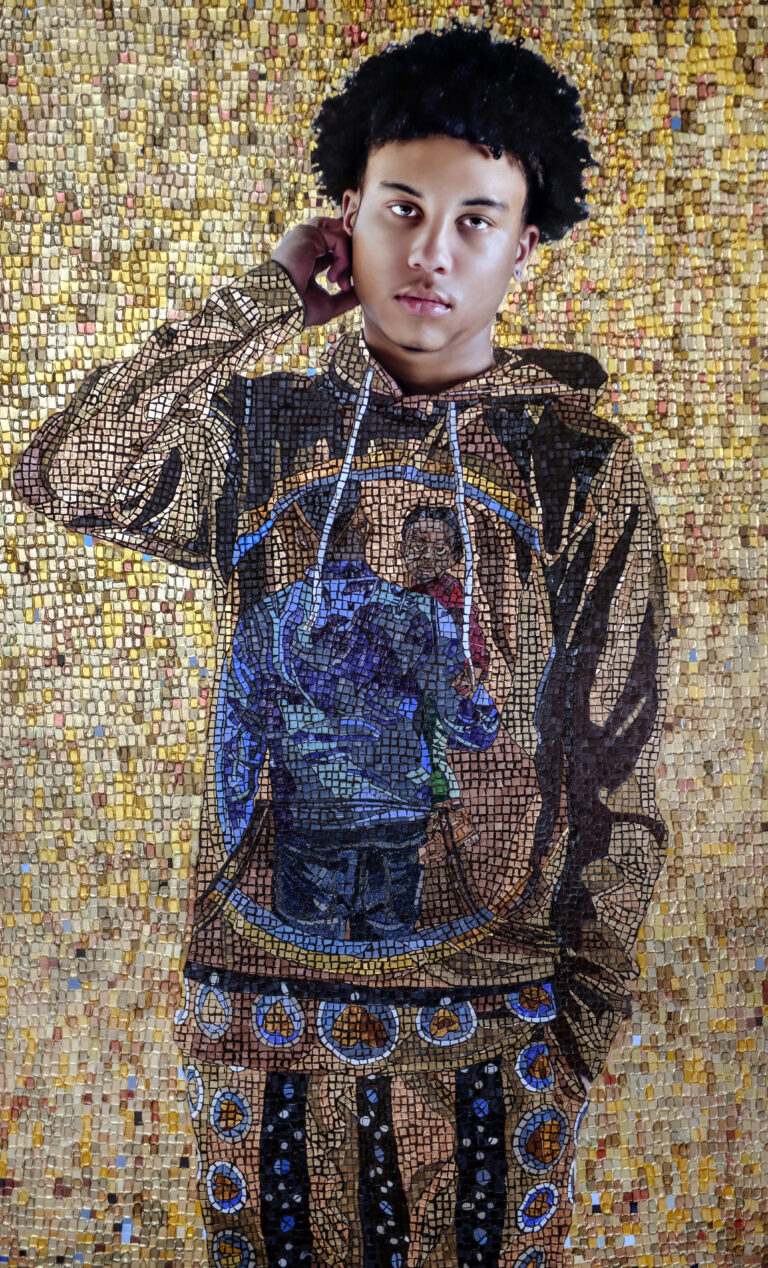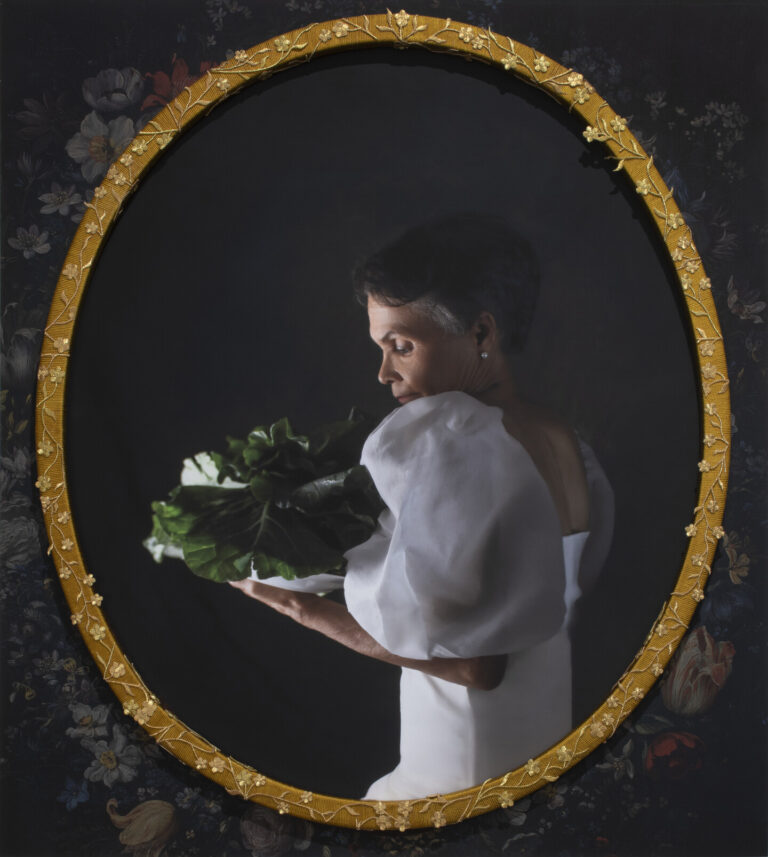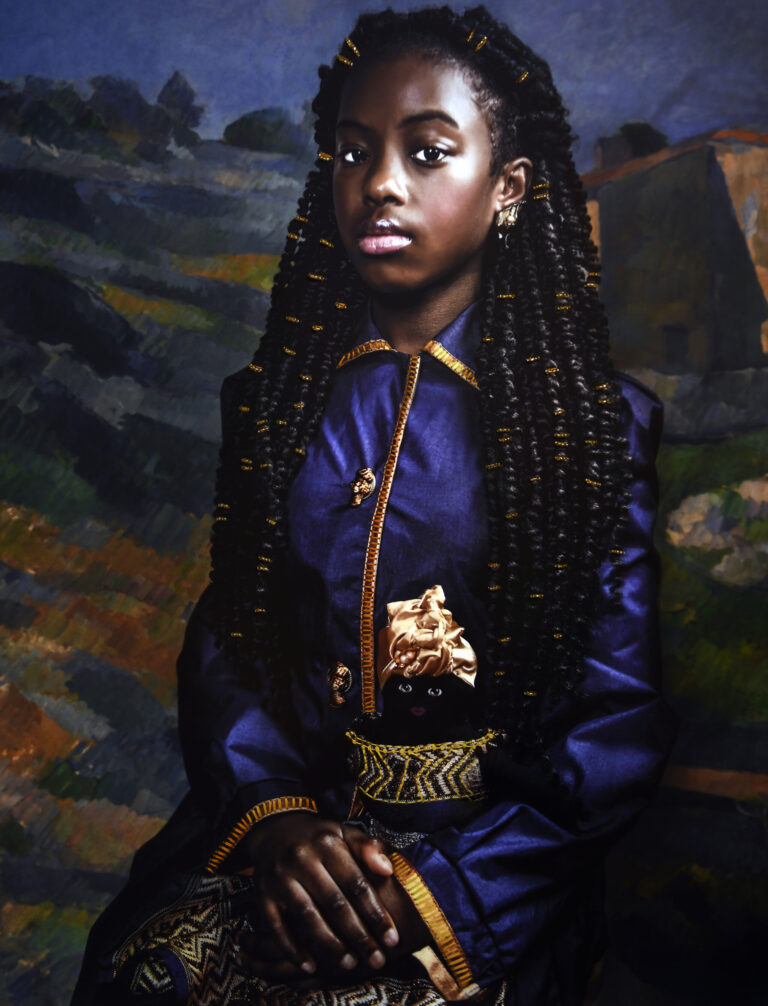Maryland-based artist Tawny Chatmon (b. 1979, Tokyo) creates evocative, layered portraits that celebrate Black culture and challenge bias. Tawny Chatmon: Sanctuaries of Truth, Dissolution of Lies, on view through March 8, 2026, features the artist’s gold-embellished works, in which she enshrines her subjects in gilded backgrounds, clothing, and accessories. It also debuts two new bodies of work: “The Reconciliation” and “The Restoration.” These series incorporate new materials and build on the themes of Chatmon’s previous work while confronting harmful stereotypes.
Golden
Chatmon finds inspiration in a wide variety of sources, including early Byzantine mosaics, opulent gilded portraits by Gustav Klimt (1862–1918), and 17th-century Dutch painting. Works from her series “Remnants” (2021–23), “The Redemption” (2018–19), and “Iconography” (2023–present) include gold-hued acrylic paint as well as 24-karat gold leaf. For Chatmon, the material symbolizes importance, value, and preciousness. Peace and Joy Are the Birthrights of All Beings (2021–22) depicts a young Black girl surrounded by lavish gold patterns. The background features spirals and birds, two recurring symbols in Chatmon’s work that indicate a connection to the heavens.
Through her photography, Chatmon centers her Black subjects, conveying their magnificence and beauty. Her own children often appear as sitters. We Are the Ones We’ve Been Waiting For (2024–25) features Chatmon’s son. He wears a hoodie, rendered in mosaic-inspired collaged paper and denim. The garment, which has been stereotyped and vilified when worn by Black boys and men, acts as a symbol of visibility and vulnerability in Chatmon’s tender portrait.
In Chatmon’s art, process holds equal importance to subject and material. Each layered work starts with a portrait session with her sitter. She then digitally alters the resulting image, often elongating the subject’s limbs, amplifying their hair, and emphasizing their eyes. Next, she painstakingly collages, stitches, and adorns her prints with additional materials, embellishing her subjects’ clothing, accessories, and surroundings. These three-dimensional elements are some of the most visually striking aspects of her work, dignifying and elevating her subjects.
Reclaiming History
Chatmon’s portraits stand as antidotes to harmful misconceptions often perpetuated in politics and media about Black style, culinary traditions, and history. Her new series “The Reconciliation” (2024–present) examines foods of the African diaspora, honoring the meals that have nourished Black families for centuries. Her subjects hold foods such as watermelon and black-eyed peas, which have rich historical contexts and personal associations but have also been linked to racist stereotypes. In That Which is Planted, Shall Become the Harvest (2025), a woman—Chatmon’s mother—gazes at a billowing head of collard greens, a food at the center of many of Chatmon’s family meals. Enclosed in a golden floral appliqué frame, she appears regal and serene.
“The Restoration” (2024–present) was born out of a desire to remove antique racist dolls and figurines from circulation. Many of the works feature children holding these objects, which the artist has lovingly repainted and reclothed. In Unstitching the Past, Becoming the Future (2023–25), Chatmon replaced the doll’s racialized features with a delicately painted face and garment sewn by the artist’s mother. This re-dressing restores dignity to the object, mirroring the noble expression of the sitter.
Honoring Legacy
Tawny Chatmon: Sanctuaries of Truth, Dissolution of Lies evokes both ancestry and descendants. The artist considers narratives that shift over time and how the stories children hear can shape who they become. Chatmon uses her camera to recenter our focus on people and histories that have been overlooked and misjudged. Her work contributes to a larger, vital narrative about value, truth, and legacy.




